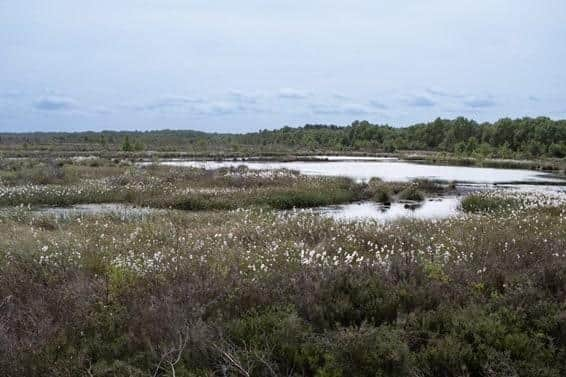New fire management partnerships are helping nature to recover at Hatfield Moors
and live on Freeview channel 276
In 2020, Hatfield Moors was devastated by a visitor-related wildfire that injured wildlife and cost emergency services hundreds of thousands of pounds.
When visiting nature reserves, people should follow the Countryside Code and not light fires, BBQs or camping stoves.
Advertisement
Hide AdAdvertisement
Hide AdThree years on from a serious wildfire at Hatfield Moors near Doncaster, nature is in recovery thanks to an ever-stronger partnership between Natural England and South Yorkshire and Humberside Fire and Rescue Services.


A new, jointly written Wildfire Management Plan is in action to prevent future fires and guide the work of reserve staff and firefighters, with visitors playing their part too.
Wildfires have a devastating impact on local landscapes, wildlife and air quality, and with May bank holidays just around the corner, the risk to nature reserves like the Humberhead Peatlands, will increase unless careful steps are followed to protect the environment.
Over the summer of 2022 the new plan proved its worth. Despite unprecedented heatwaves there were no serious fires.
Advertisement
Hide AdAdvertisement
Hide AdThis new plan is in addition to a number of steps taken to reduce the risk of fire at nature reserves. This includes:
Daily monitoring by Natural England staff of both the Met Office’s Fire Severity Index and the Daily Hazard Assessment produced by the Natural Hazards Partnership. Reserve staff then take appropriate fire prevention steps, from updating signage and making sure emergency equipment is ready, to communicating fire risk to visitors and – in extreme cases – closing the reserve.
Increased site monitoring by reserve staff if the risk of fire is high, enlisting the support of volunteers and neighbours.
Fire control lines – areas that are more resilient to fire, such as a firebreak, dense deciduous woodland or boggy or re-wetted areas. These can slow the spread of a fire and provide access to fire and rescue services.
Improved training and equipment for staff.
Advertisement
Hide AdAdvertisement
Hide AdEveryone at the reserve – from wardens to visitors – has a role to play, whether that’s managing reserve vegetation and maintaining machinery to following the Countryside Code. This includes not bringing BBQs onto the site or dropping litter, and not lighting fires or camping stoves.
Julian Small is the Peatland Restoration Advisor for Natural England at Hatfield Moors said: “Wildfire plans are even more important in the face of a changing climate where summer droughts will become more frequent and more severe. Extinguishing the wildfire back in 2020 and managing the wider impacts was a real team effort. I’m proud of the Wildfire Management Plan and the way we’ve been implementing it with the Fire and Rescue Service and other partners for two reasons. First, it’s work through a summer of unprecedented heatwaves. And secondly, it’s had good feedback both internally and from local partners.
“Unfortunately, evidence shows that many wildfires start by accident. So, following the Countryside Code is the number one thing that all of us can do. In places like Hatfield Moors, that includes not bringing BBQs onto the site or dropping litter, and not lighting fires or camping stoves. If visitors see flames, they should dial 999.”
Rich Leighton, Station Manager for Thorne Fire Station said: “We wanted to learn lessons and mitigate the risk of a fire happening again as best we can going forwards.
“Being ready is essential. It’s about getting everything in order so that if a fire does start, we’re prepared for it. It’s really important for the fire service that we get off to a good start. The impact of this can be massive and stop an incident from becoming serious.”
Hatfield Moors’ Wildfire Management Plan has proven so successful that it will be incorporated into the reserve’s wider Site Management Plan. Regular reviews and updates will also be part of ongoing work to prevent future fires.
To read more about the Wildfire Management Plan, visit the Natural England blog at https://naturalengland.blog.gov.uk/2023/04/04/how-new-fire-management-partnerships-are-helping-nature-to-recover-at-hatfield-moors/
Comment Guidelines
National World encourages reader discussion on our stories. User feedback, insights and back-and-forth exchanges add a rich layer of context to reporting. Please review our Community Guidelines before commenting.